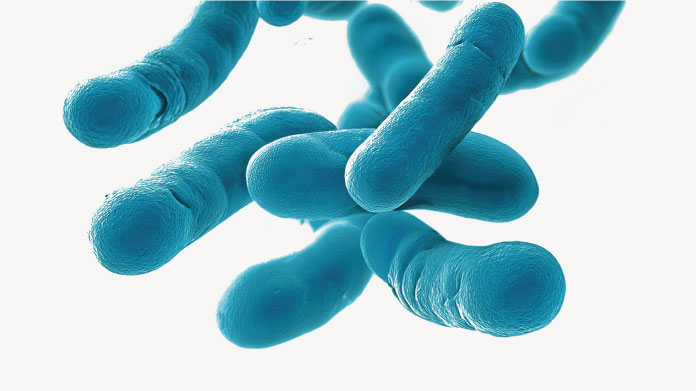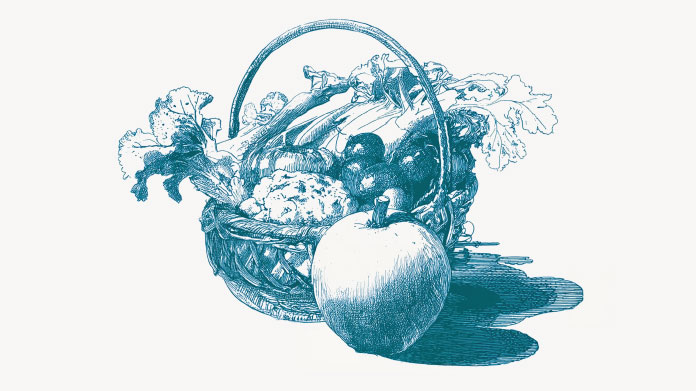Am I gluten-intolerant (or gluten-sensitive)?
Do you have gluten intolerance or sensitivity? Discover the facts about both by reading our comprehensive summary.

What exactly is gluten?
Contrary to what you might think, gluten is not a substance found naturally in grains! From the Latin glutinium meaning ‘glue’, gluten actually signifies the elastic network that forms when certain types of flour come into contact with water. Invaluable in baking, gluten is integral to the process of bread-making, as it enables dough to rise.
On a molecular level, gluten is primarily composed of two large groups of grain proteins, prolamins and glutelins. So it’s as a result of metonymy (when something comes to be known by the name of one of its attributes/aspects) that the term gluten is nowadays understood as these particular protein fractions found in certain grains.
An easy way to remember the main grains that contain gluten is by thinking of the acronym BROWS: Barley, Rye, Oats, Wheat, Spelt.
Gluten intolerance: what exactly is it?
In certain people, consuming gluten triggers an auto-immune reaction in the lining of the small intestine: this is referred to as gluten intolerance or celiac disease (1). With prolonged inflammation, the hairlike projections (villi) that line the intestine atrophy and struggle to properly absorb nutrients.
Undetected, this disease can over time lead to more serious complications, such as mineral and vitamin deficiencies, bone demineralisation and even a higher risk of developing cancer.
What symptoms are suggestive of celiac disease?
Genetically determined, celiac disease is thought to affect1% of the global population though it is not always diagnosed. Signs of the disease are sometimes subtle and vary considerably from one person to another (2). Nevertheless, a combination of the following symptoms is a strong indication:
- frequent bloating after meals;
- recurrent diarrhea;
- unexplained fatigue;
- significant weight loss;
- joint pain;
- irondeficiency.
How is a diagnosis of gluten intolerance confirmed?
If you suspect you are gluten-intolerant, consult your GP in the first instance. He or she will arrange a blood test to detect the presence of antibodies targeting the gluten proteins (IgA anti-transglutaminases). If the result is positive, a biopsy of the small intestine will be taken to determine the condition of the intestinal mucosa.
If you were thinking of independently starting a gluten-free diet, at least wait until you’ve had a blood test, otherwise the absence of gluten in your diet will skew the results.
Can gluten intolerance be cured?
There is currently no effective treatment for eradicating celiac disease. The only effective way of containing it is to adopt a gluten-free diet for life.
This is quite restrictive as it requires you to thoroughly review what you eat, not only checking for gluten-based products, but also those that may have been exposed to cross contamination during the production process.
Celiac UK (association for gluten-intolerant individuals) makes shopping easier for celiacs with its ‘crossed grain’ trademark. A symbol you can trust, it guarantees the absence of gluten in any product displaying it (a residual content of less than 20mg per kg) with meticulous scrutiny of manufacturing sites.
Main features of a gluten-free diet
If you’ve just found out you have celiac disease, don’t worry. There are many grains that are naturally gluten-free which can be substituted for the traditional BROWS.
The familiar rice and corn shouldn’t prove too much of a departure from your previous diet. A little more unusual, quinoa, buckwheat, millet, amaranth and teff are all worth discovering for their excellent nutritional profile (3). And don’t forget legumes which are totally gluten-free!
What about small spelt, which is often hailed as well-tolerated? While its gluten content is low, it isn’t zero, so unfortunately it should be avoided if you are gluten-intolerant.
While it’s easy to sidestep gluten-containing raw foods, it’s much trickier in the case of ready meals where gluten can be well-hidden. So you need to scrutinise the label, looking out for, amongst others, any mention of ‘wheat starch’ or ‘wheat syrup’ which feature in certain biscuits, baking powders and stock cubes. Another potential trap is soy sauce , which usually involves the fermentation of wheat.
Note: almost all our dietary supplements are compatible with a gluten-free diet. To be certain, look for the symbols under our product photos!
Gluten sensitivity: how does it differ from gluten intolerance?
In gluten sensitivity, there is no evidence of an immune or inflammatory response, and in particular, no anti-transglutaminase antibodies. However, various digestive or rheumatic problems are very much present, though they soon disappear once gluten is eliminated from the diet (6). The scientific community has yet to establish why this is so; nonetheless, gluten sensitivity is believed to affect 13% of Western populations. If you suffer gluten-related symptoms such as these, without having been diagnosed as gluten-intolerant, it’s safe to assume you are gluten-sensitive. In this case too, don’t hesitate to consult your GP.
Unlike people with celiac disease, those with gluten sensitivity do not necessarily need to adhere to a strict gluten-free diet. Reducing or eliminating major dietary sources of gluten (such as bread and pasta) will often be enough to provide relief.
For non-celiacs who have problems digesting wheat and the like, some naturopaths advise taking enzymes that can break down gluten proteins, such as endopeptidases and exopeptidases (as in the product Glutalytic®, a cutting-edge and scientifically-supported supplement) (7-8). A helping hand that allows you to still enjoy that pizza night with friends!
References
- Parzanese I, Qehajaj D, Patrinicola F, et al. Celiac disease: From pathophysiology to treatment. World J Gastrointest Pathophysiol. 2017;8(2):27-38. doi:10.4291/wjgp.v8.i2.27
- Schuppan D, Zimmer KP. The diagnosis and treatment of celiac disease. Dtsch Arztebl Int. 2013;110(49):835-846. doi:10.3238/arztebl.2013.0835
- Abugoch James LE. Quinoa (Chenopodium quinoa Willd.): composition, chemistry, nutritional, and functional properties. Adv Food Nutr Res. 2009;58:1-31. doi: 10.1016/S1043-4526(09)58001-1. PMID: 19878856.
- Caselato-Sousa VM, Amaya-Farfán J. State of knowledge on amaranth grain: a comprehensive review. J Food Sci. 2012 Apr;77(4):R93-104. doi: 10.1111/j.1750-3841.2012.02645.x. PMID: 22515252.
- Li L, Lietz G, Seal C. Buckwheat and CVD Risk Markers: A Systematic Review and Meta-Analysis. Nutrients. 2018;10(5):619. Published 2018 May 15. doi:10.3390/nu10050619
- Roszkowska A, Pawlicka M, Mroczek A, Bałabuszek K, Nieradko-Iwanicka B. Non-Celiac Gluten Sensitivity: A Review. Medicina (Kaunas). 2019;55(6):222. Published 2019 May 28. doi:10.3390/medicina55060222
- Kõiv V, Tenson T. Gluten-degrading bacteria: availability and applications. Appl Microbiol Biotechnol. 2021;105(8):3045-3059. doi:10.1007/s00253-021-11263-5
- Dunaevsky YE, Tereshchenkova VF, Belozersky MA, Filippova IY, Oppert B, Elpidina EN. Effective Degradation of Gluten and Its Fragments by Gluten-Specific Peptidases: A Review on Application for the Treatment of Patients with Gluten Sensitivity. Pharmaceutics. 2021;13(10):1603. Published 2021 Oct 2. doi:10.3390/pharmaceutics13101603
4 Days
Quick service
Quick service
MONELL
5 Days
Speedy service.
Speedy service.
ROSENTHAL Marvin
8 Days
Clear website- Efficient
Clear website. Excellent search engine and fast delivery!
Mohamad Hussein
11 Days
They have great products.
They have great products.
Vickie
11 Days
Great Shipping Time!
You Have A Great Shipping Time! Praise The Lord!
DMHoge
13 Days
Doctor Recommended!
Good pricing, very good availability, doctor recommended (couldn't find what I needed anywhere else), and it took only a week to arrive (which I can't complain about).
Al
14 Days
Great product and fast shipping
Great product and fast shipping
Marie
15 Days
New customer 1
I got my order fast and on time.
SA
15 Days
Great Service
Fast, good communication, as promised.
Juli
19 Days
Thrgood product website is easy to use and shipping…
Thr website is easy to use and shipping is very fast.
Richard Kienzle
20 Days
I like and recommend it!
I like and recommend it!
CRUZ Francisco
21 Days
Really like that they don’t have…
Really like that they don’t have fillers in their supplements. Great customer service and quality products
Becky E. Stiles
27 Days
Catalase.
Great catalase product.
John Yagi
38 Days
I always receive my products on time.
I always receive my products on time.
Kelly
44 Days
Fast service and good products
Fast service and good products
PERCY



